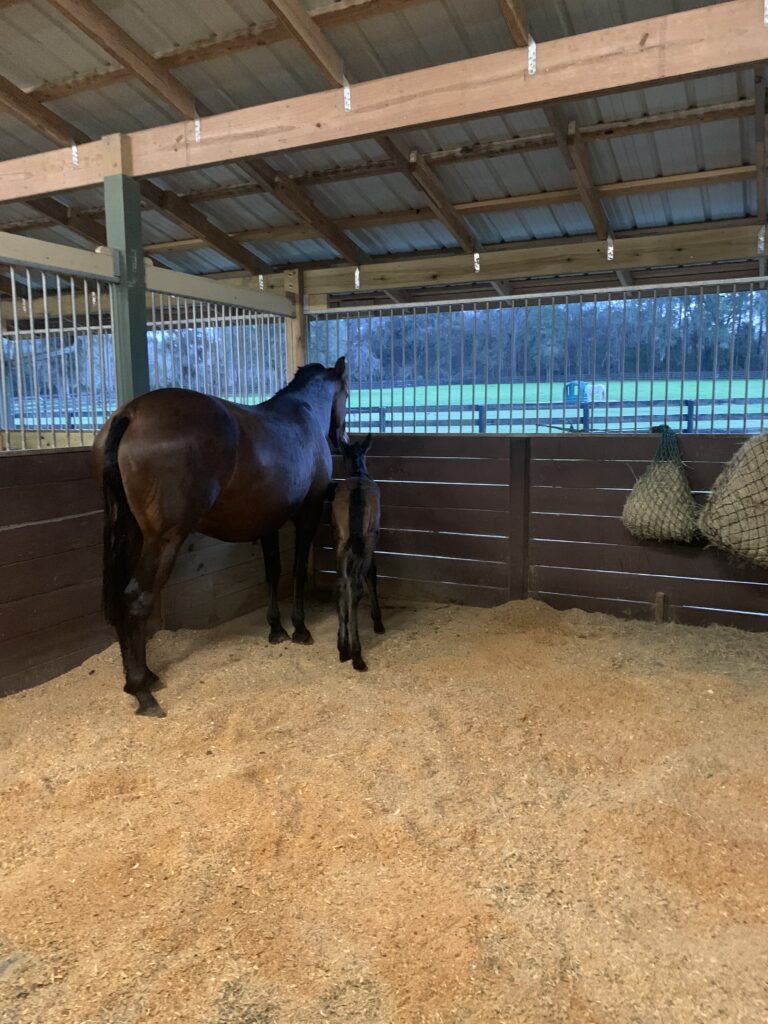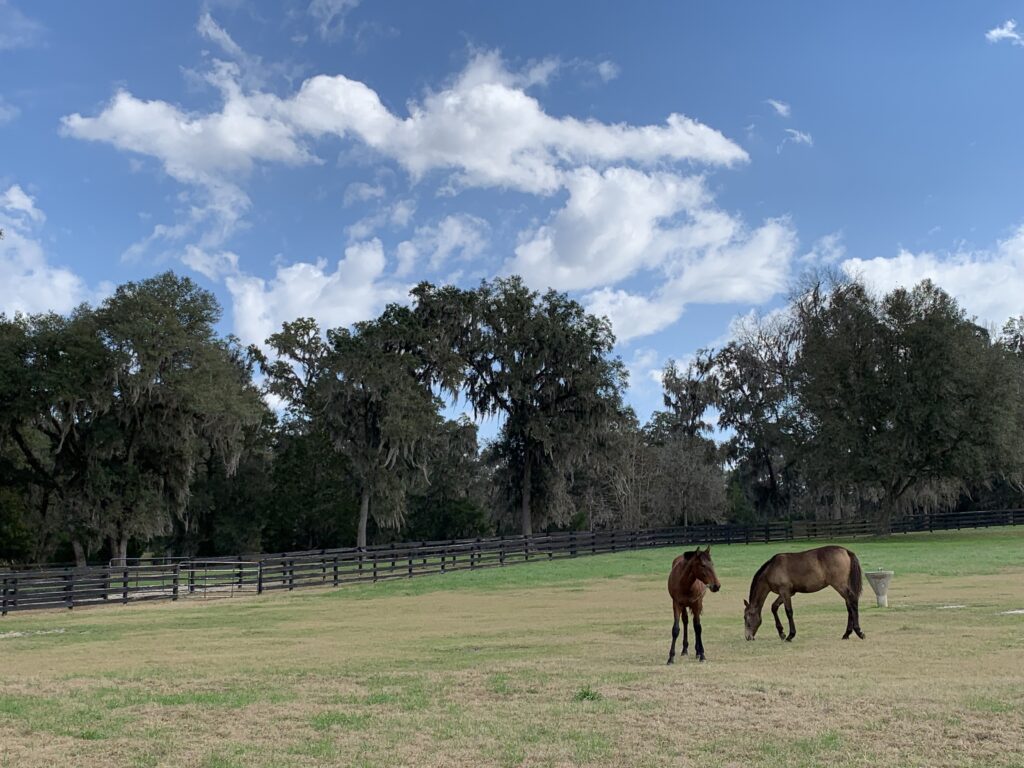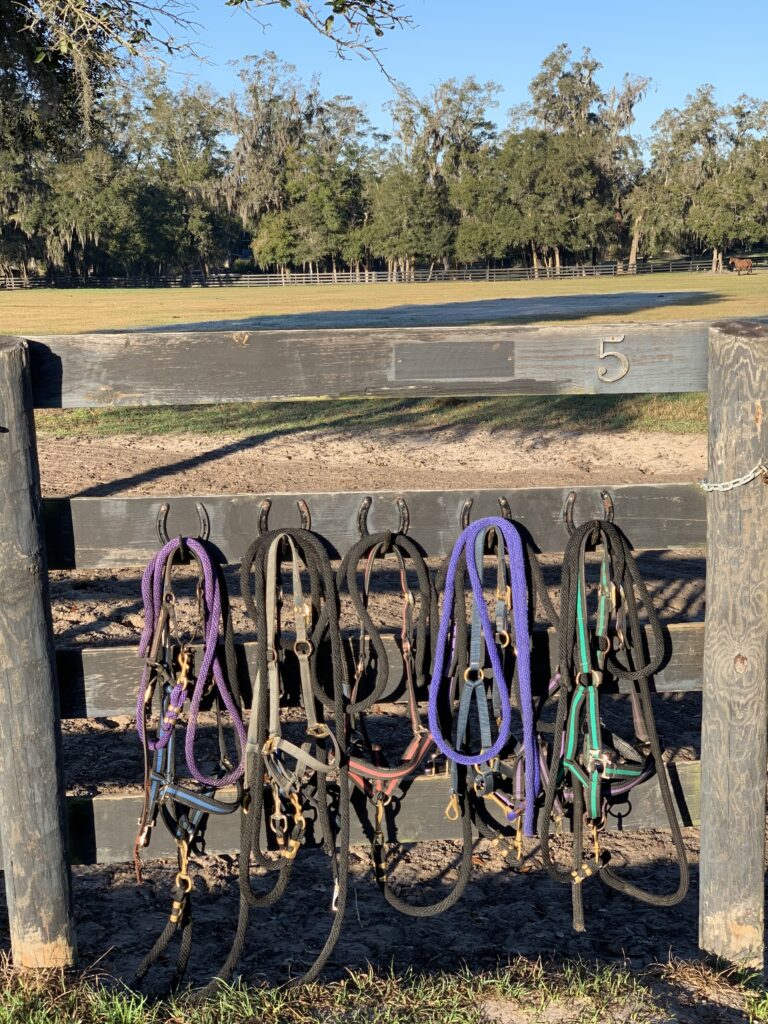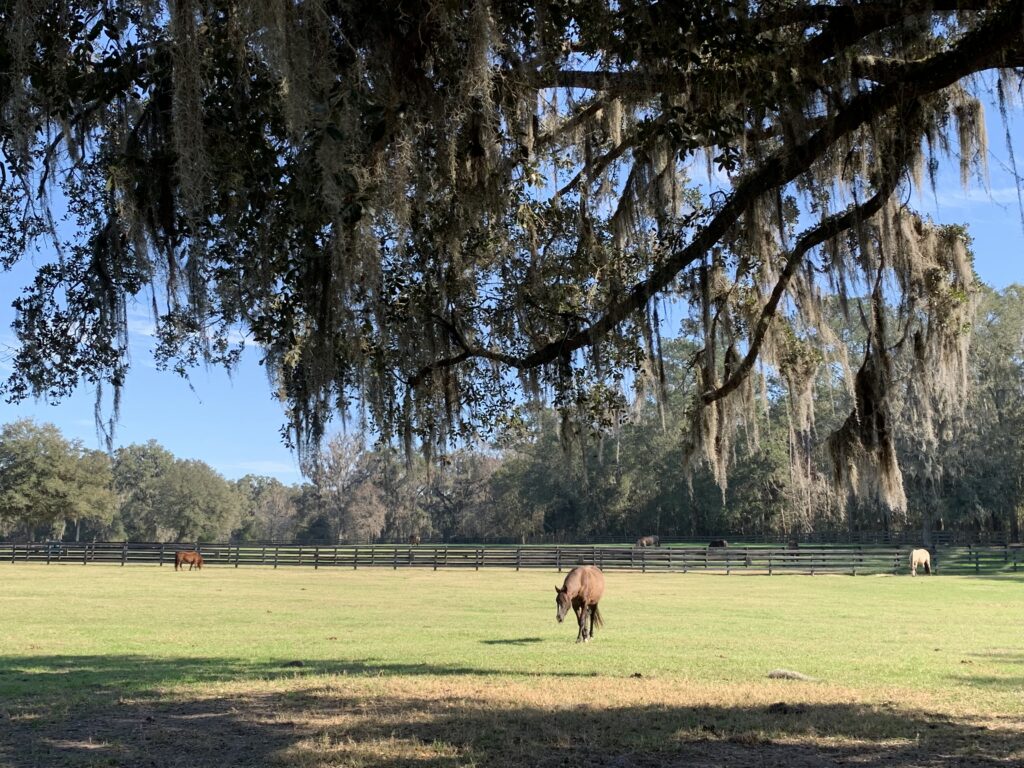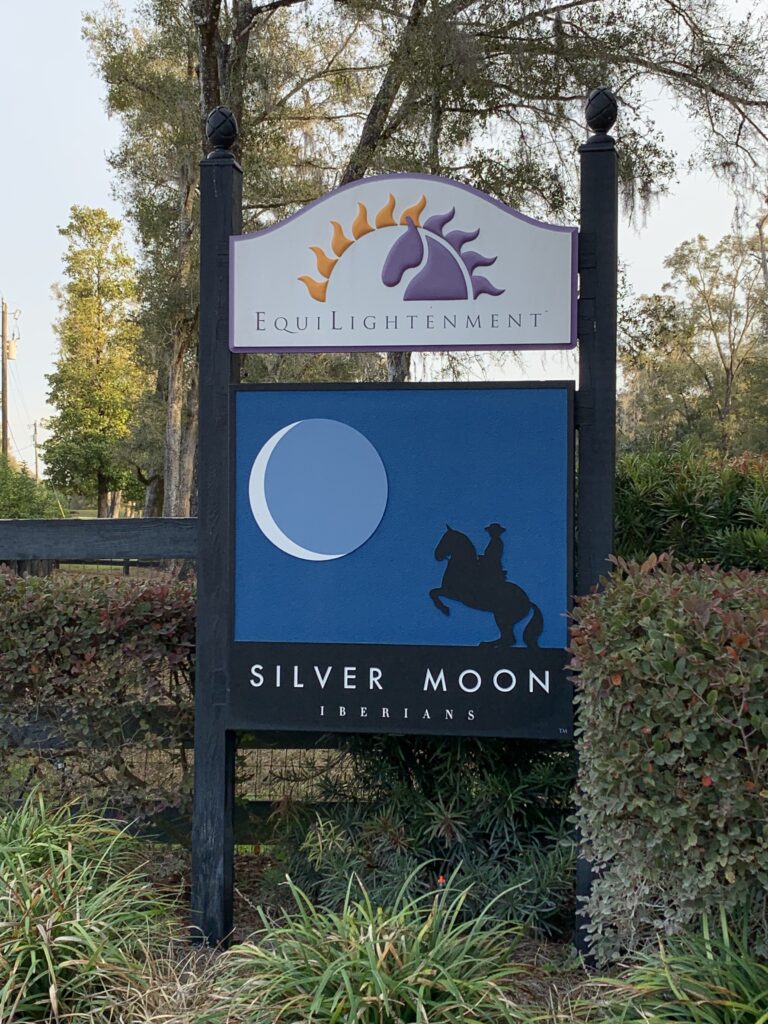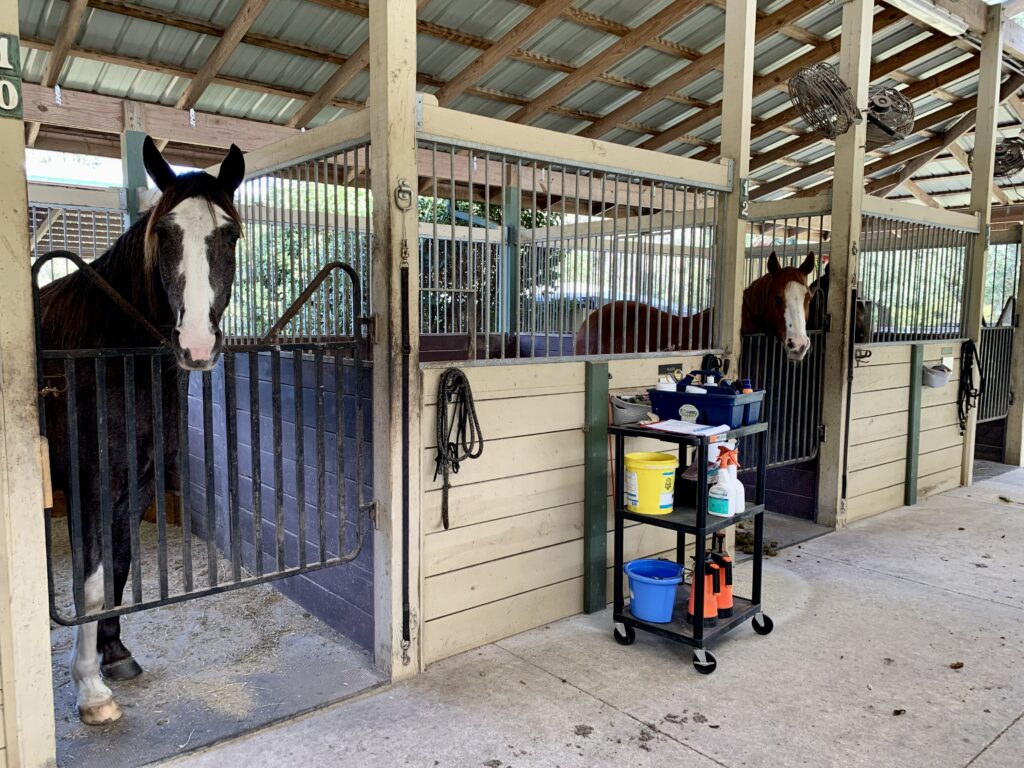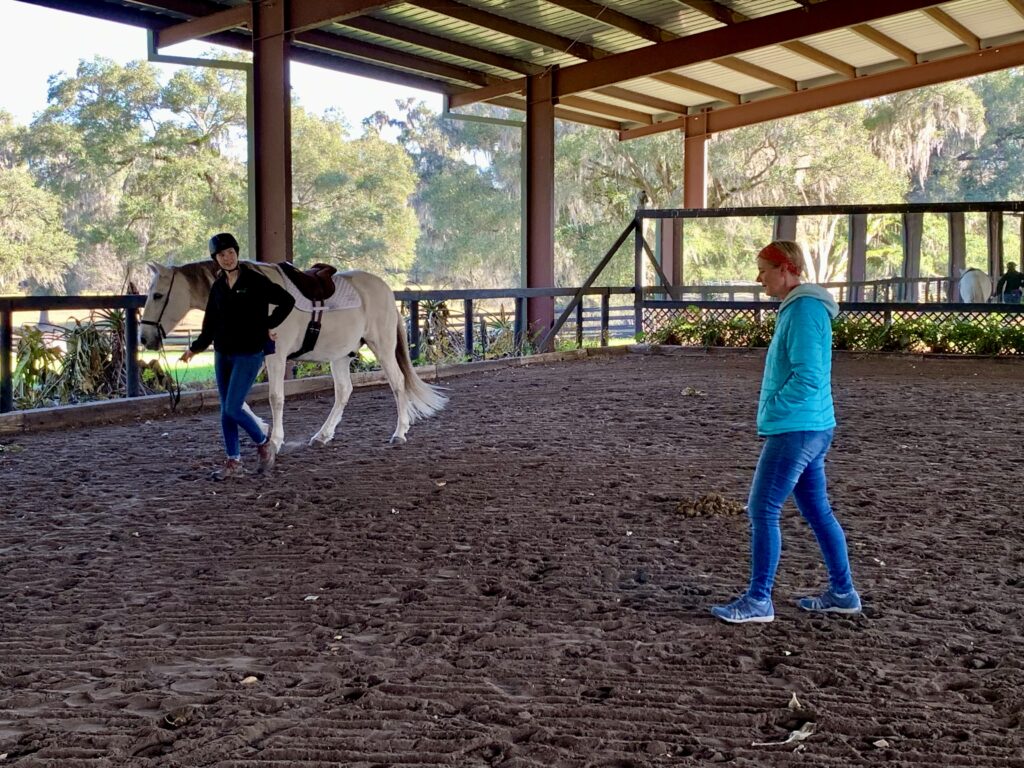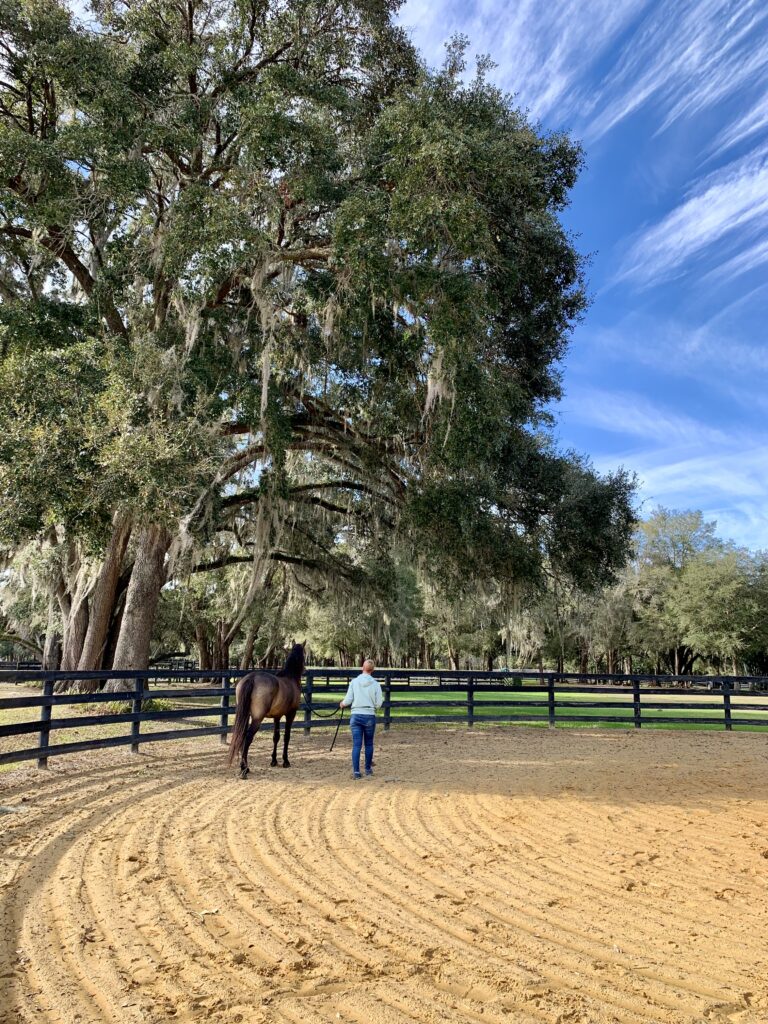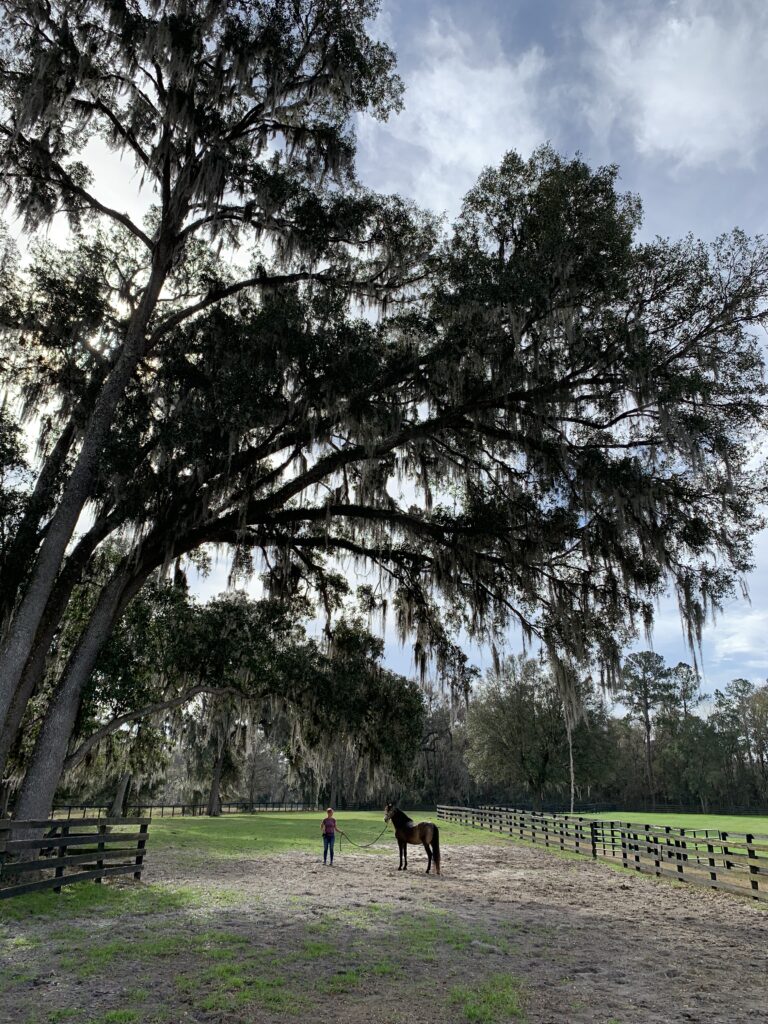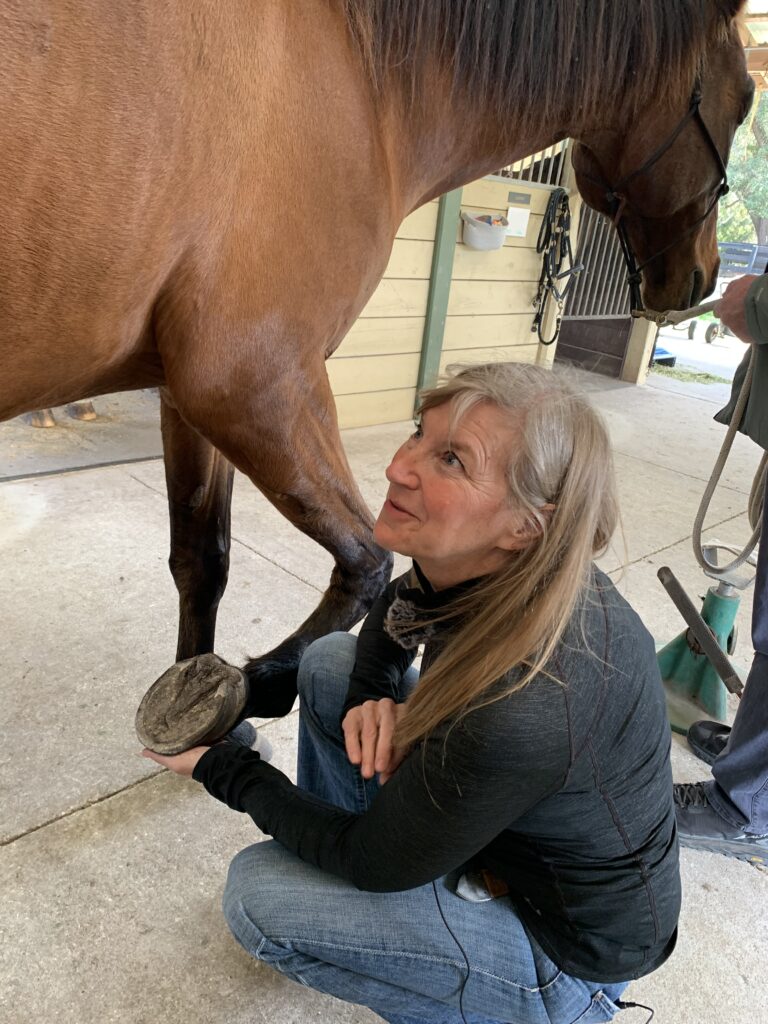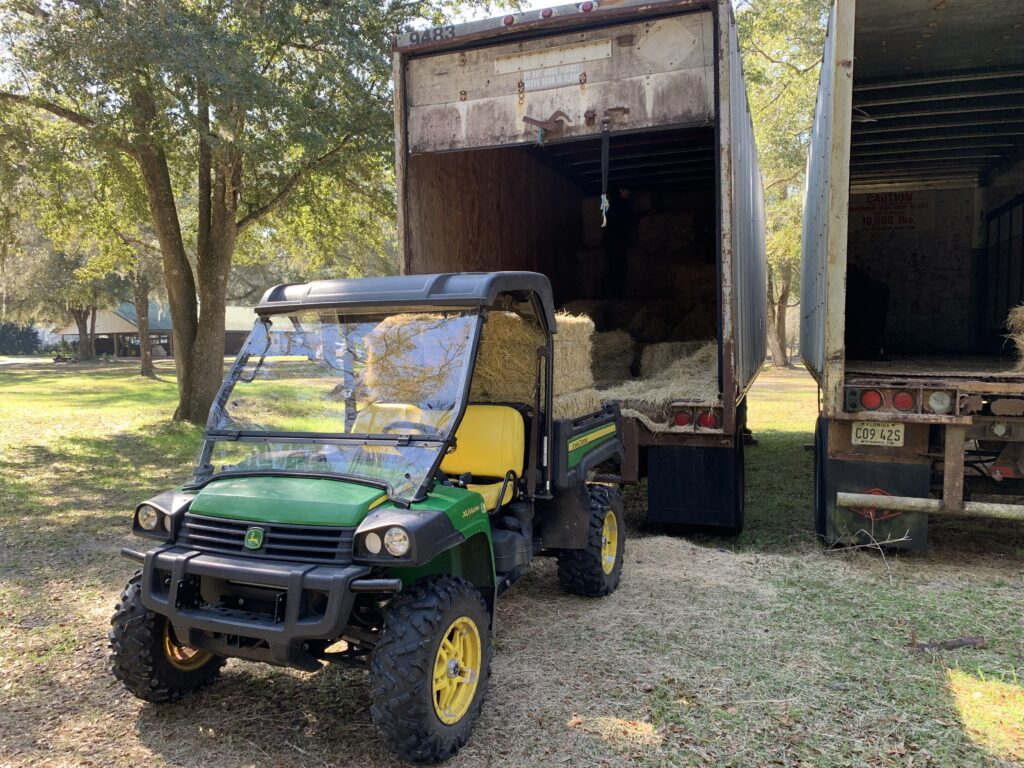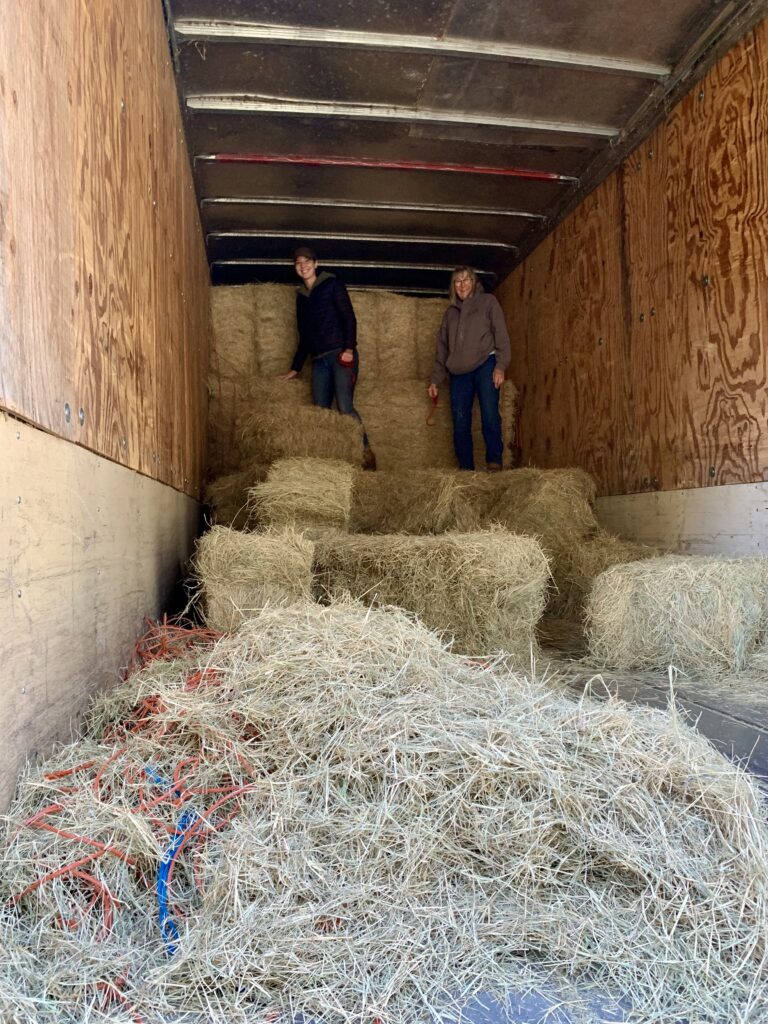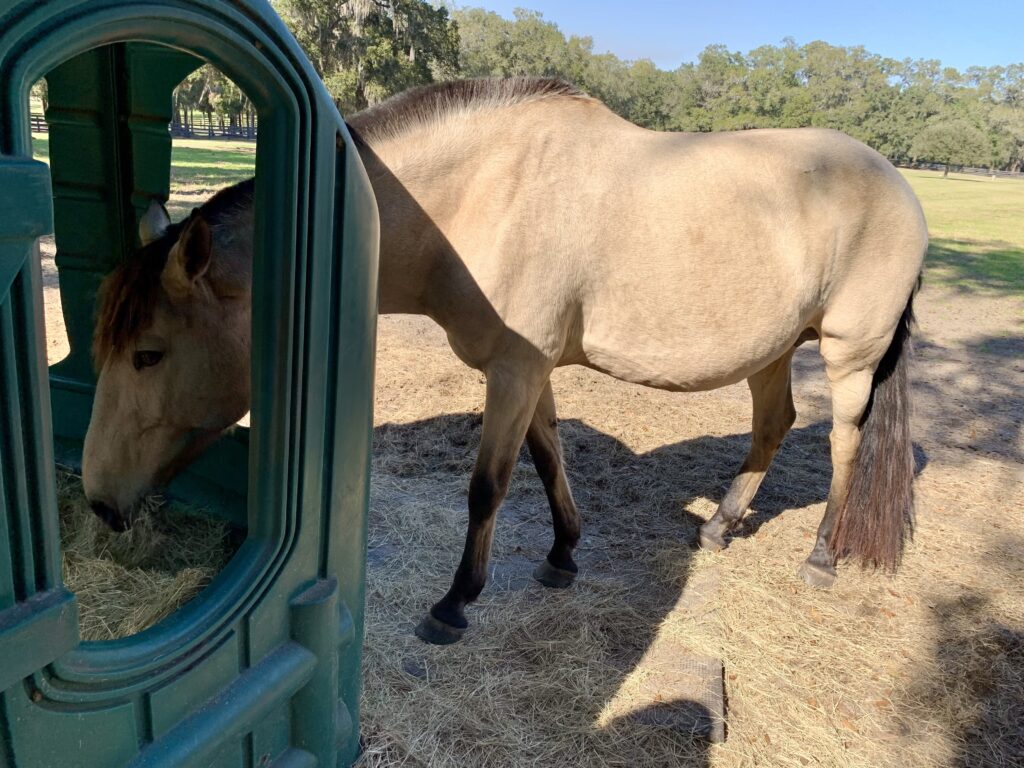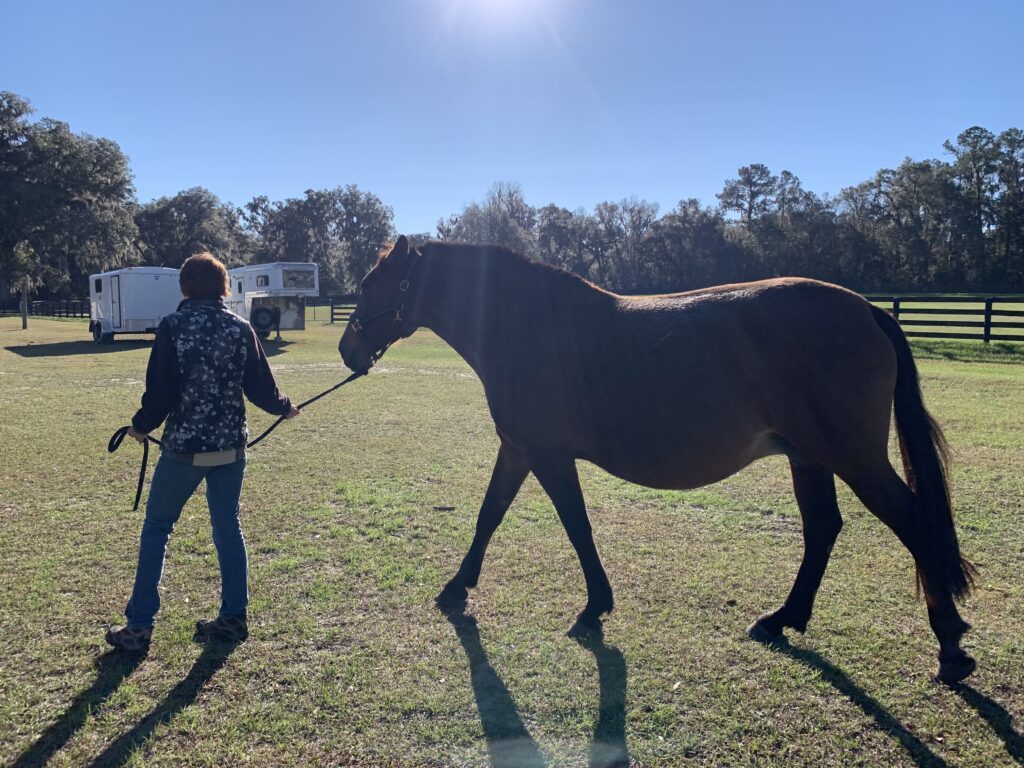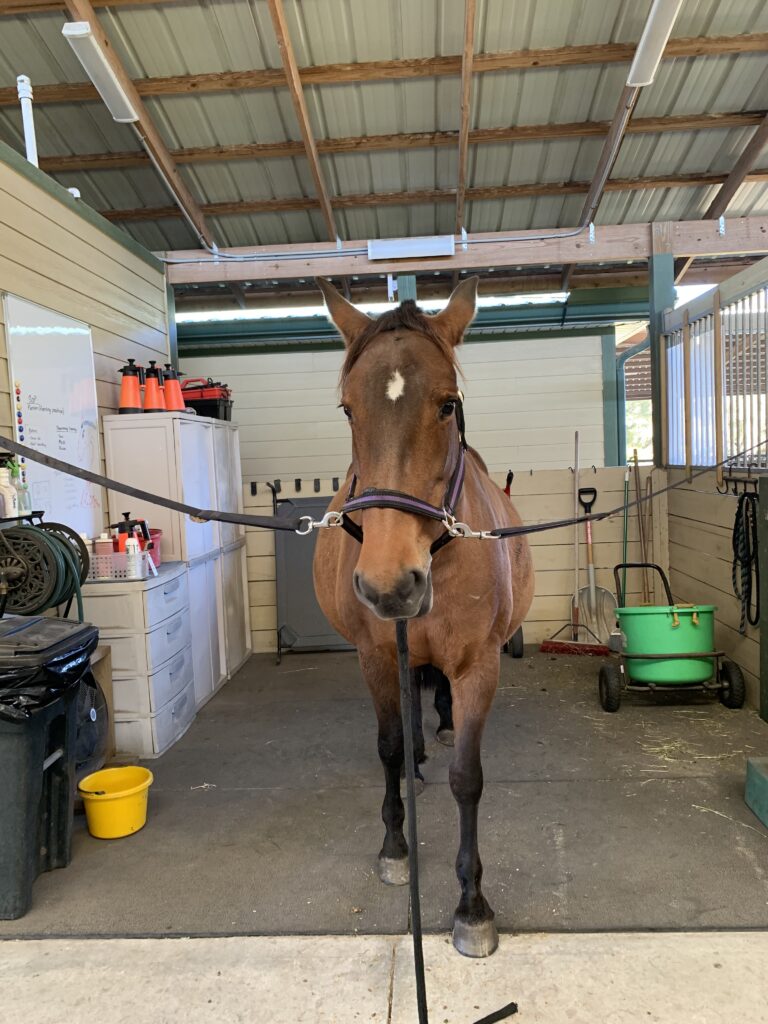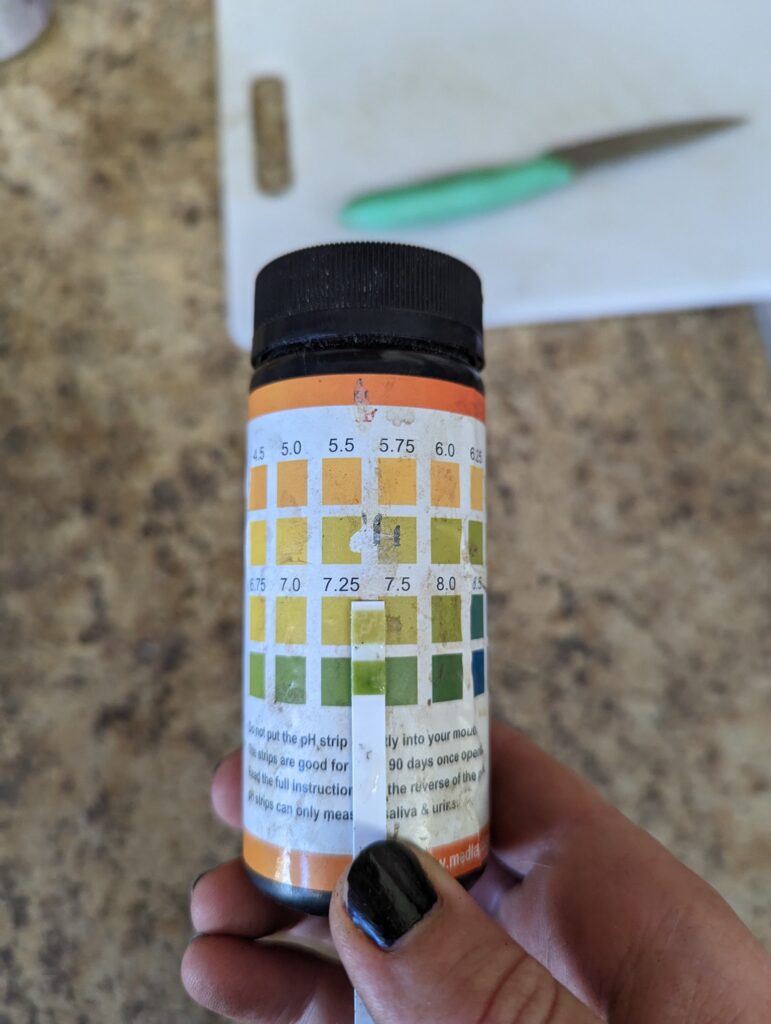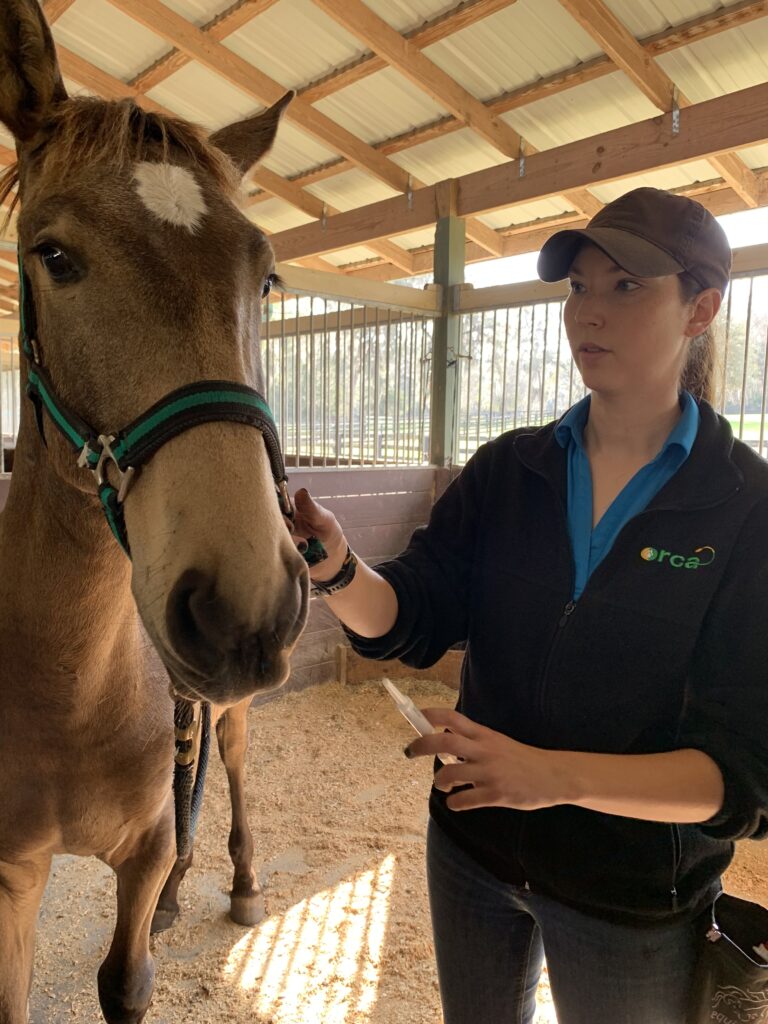Enrolled in Equine Reproduction this semester, I have read extensively about mare and stallion anatomy, studied the process of oogenesis and spermatogenesis, watched a testicle dissection video, and even sculpted a horse vagina out of Play-doh. So I feel pretty book smart when it comes to making a baby horse. I just haven’t actually seen the final product. Until now!
Since starting my internship at Silver Moon Iberians, I’ve been helping to care for this sweet mare, Crescente, and hoping to be there for the birth of her baby. She was showing all the signs of being close: “bagging up,” which means her milk production started and her udders were beginning to fill; waxy plugs had formed on her teats; and her pelvic ligaments had relaxed (her tail area felt like a gel pillow). Plus, she was huge.
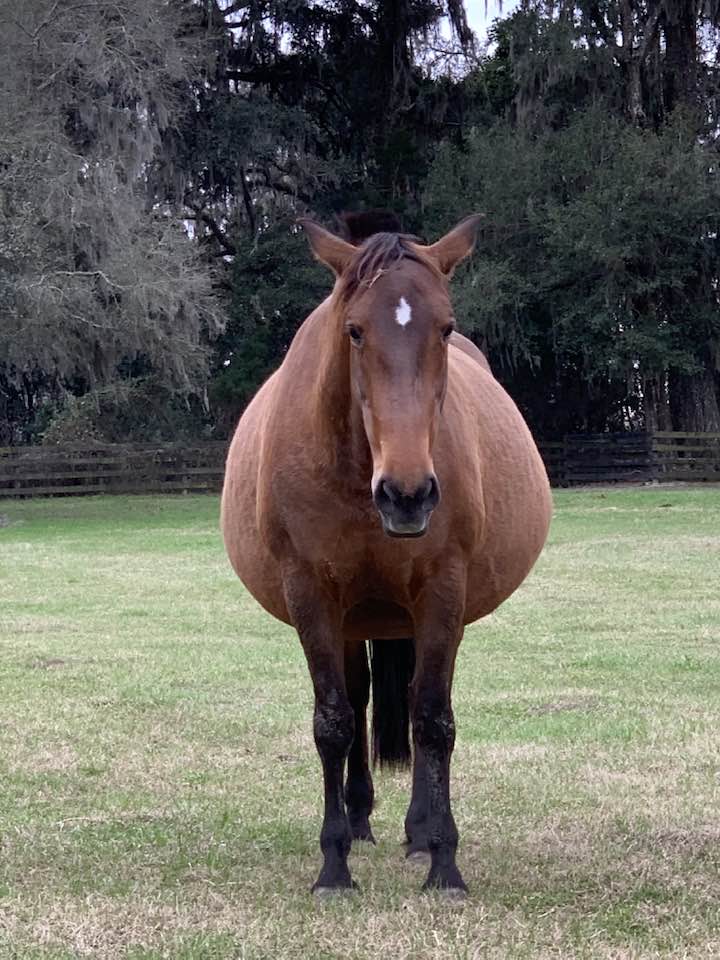
Each day, Jess took a sample of Crescente’s milk to test with a pH strip. The pH of mammary secretions are around 8.0 to 8.5 until shortly before they are ready to foal, and then the pH drops significantly. When it reaches 6.4, there’s a good chance the stork will pay a visit.
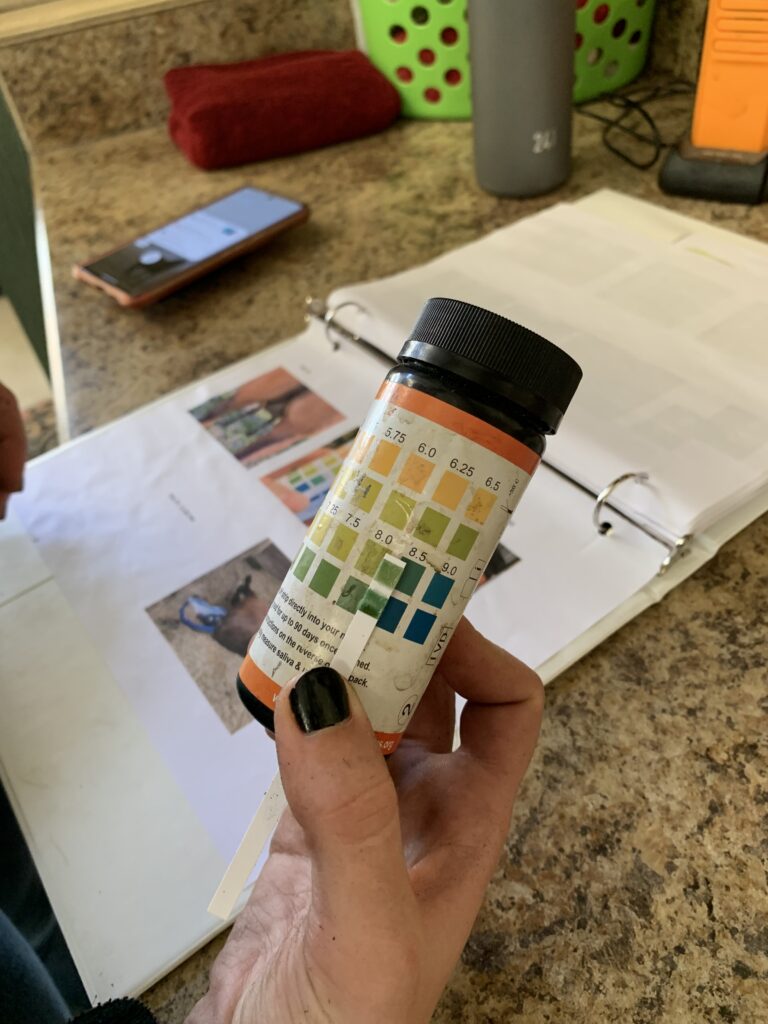
That happened last Tuesday. Everyone felt certain Crescente would deliver that night. Her owner, Sharon, set up a foal watch system for each of us to take shifts watching the barn cameras. I was on duty from 1 to 2 a.m., but then I couldn’t get back to sleep because I didn’t want to miss the big event! Turns out there was no big event. Later, Sharon realized the pH strips were old, so the results were unreliable.
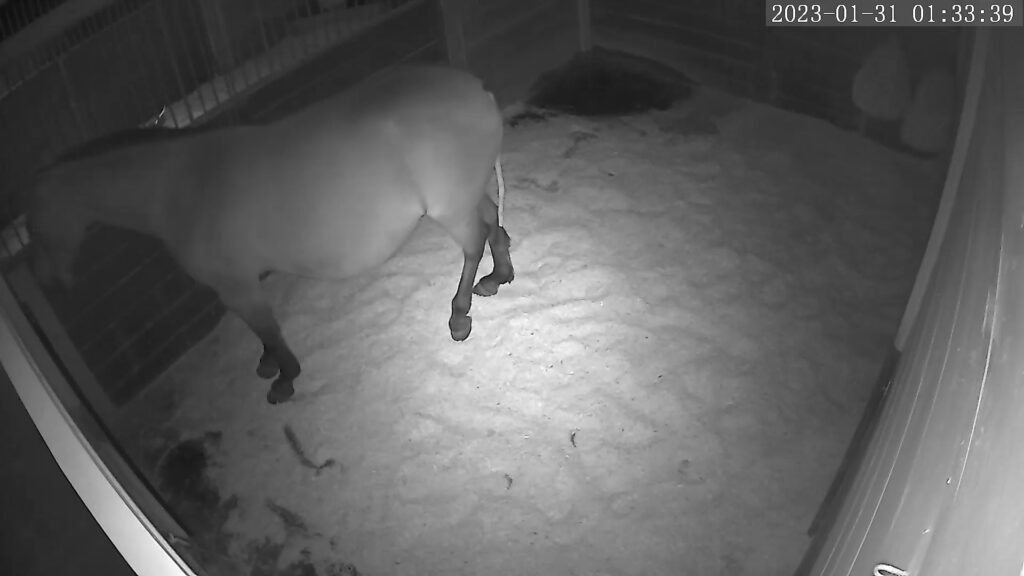
On Friday, we brought the horses in from the pasture for breakfast and some grooming. When they were ready for turnout, I haltered Crescente and led her out of the barn. “Is that blood?” called Chris, one of the staff members. She pointed to two splotches on the barn’s concrete floor. If we had walked just a few more steps, the blood would have landed in grass, and we probably wouldn’t have noticed it. Sharon called the veterinarian, Dr. Carolin von Rosenberg, who came to the barn to make sure everything was OK.
Jess held Crescente’s halter and fed her a steady stream of sweet feed, while I held Crescente’s tail out of the way.
Dr. von Rosenberg cleaned up Crescente and inserted a speculum, which looked like the cardboard tube from a roll of wrapping paper. She examined Crescente for blood, but didn’t see anything suspicious. “Want to look in here?” she said, passing the penlight to me to have a peek.
Feeling fortunate to have this firsthand experience with the very stuff I’m studying in class, I looked through the tube at Crescente’s healthy, pink, tightly closed cervix. “How cool!” I exclaimed.
Dr. von Rosenberg then pulled on a shoulder-length latex glove and reached in to Crescente’s rectum. She pulled out some feces and tossed them in a bucket. Then she peeled off her glove, cleaned up Crescente, and re-gloved to insert the ultrasound probe.
A horse’s reproductive tract sits just beneath her gastrointestinal tract, so the vet can palpate the reproductive organs through the wall of the rectum and use an ultrasound to see a cross section of the uterus.
At first, Crescente’s exam seemed normal. Then Dr. von Rosenberg pointed to the screen and said, “This line right here is all placenta, but I’m not too happy with the way it looks. The problem is this placenta is separated from the wall, which means we’re looking at a red bag starting to happen.”
The equine placenta is made up of two parts: The amnion is the white, filmy bag that contains the fetus, and the chorioallantois, or “red bag,” attaches to the uterus and allows nutrients and waste to pass through the umbilical chord. In a normal delivery, the foal arrives first, and the red bag is passed within a few hours. However, in a red bag birth, the chorioallantois detaches prematurely from the uterus, cutting off the foal’s oxygen supply. If the baby is not immediately cut out of the red bag at birth, it will die.
Dr. von Rosenberg said the baby in utero was moving and seemed fine, but she recommended taking Crescente to the Equine Medical Center of Ocala (EMCO). Within 15 minutes, Crescente was in the trailer and headed to the hospital.
Monday morning, as Jess and I were working in the barn, we got a text from Sharon saying Crescente had foaled. It was a red bag birth, but the EMCO staff were able to intervene immediately to rescue the little colt. We all feel profoundly grateful for those splotches of blood on the concrete that ensured Crescente was at the right place at the right time to deliver her baby.
I could hardly wait to meet the little guy.
When he was just six hours old, the colt greeted us at his EMCO stall. He was up and walking around, a bit wobbly but determined. Unimpressed, Crescente didn’t act very maternal at first. Finally, Sharon realized the poor mama was hangry. She found a few flakes of alfalfa, and Crescente chomped away happily for almost two hours while her baby waddled around her in circles, poked at her teats trying to get the hang of nursing, and otherwise made a nuisance of himself. Finally, satiated, she licked her boy’s little face. He eventually tired out and awkwardly collapsed his gangly legs to take a nap.
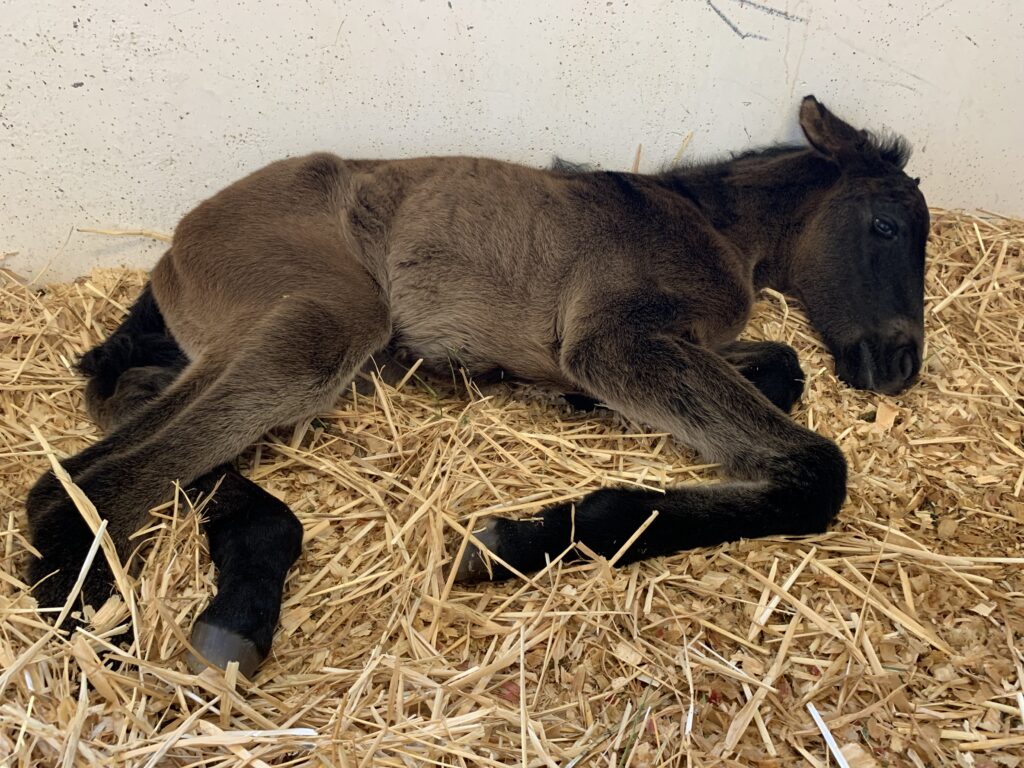
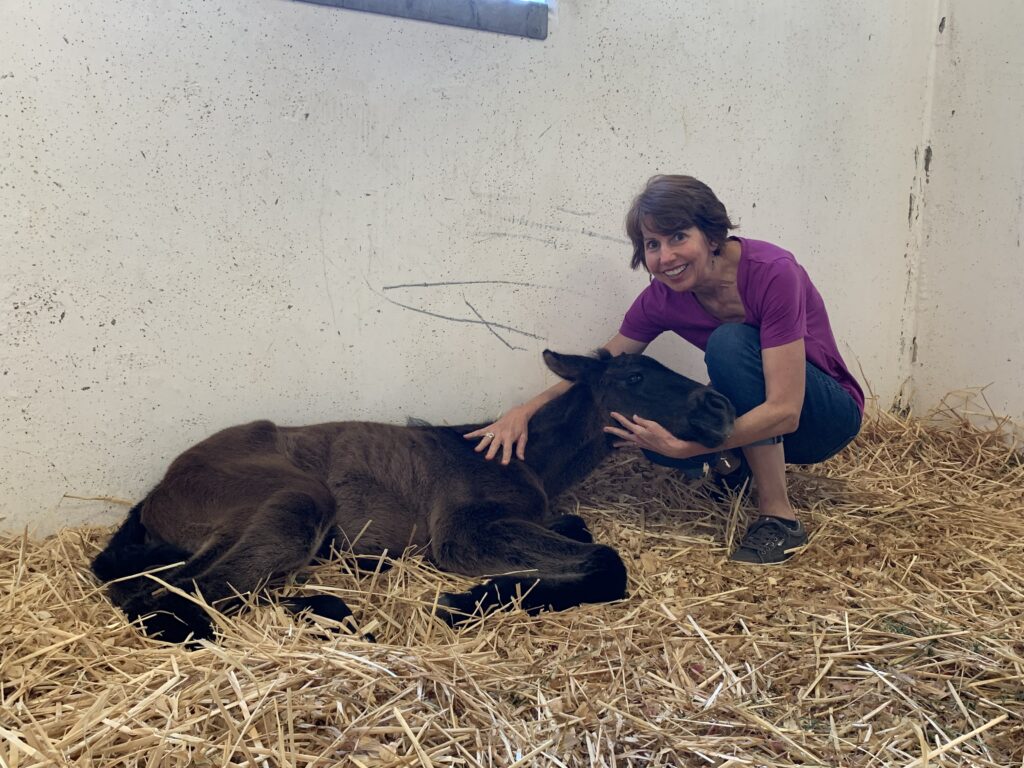
Yesterday, I met Sharon and her husband, Dave, at EMCO to load up Crescente and her boy in the trailer. We were all stressed about the 12-mile journey, worried that Crescente could stumble and accidentally trample her foal. I followed them home and breathed a sigh of relief when Crescente stepped out of the trailer with the baby skittering down the ramp behind her.
Sharon put them in a small pasture while she prepared their stall. Crescente seemed happy to be home, and after a little romp around the pasture, she settled down to grazing. She kept an eye on her boy, though, moving toward him when he ventured away. Clearly curious and brave, he explored his new surroundings, even approaching me for a scratch on his neck. Occasionally, he jumped in the air, bucked, or ran a circle around his mom and then dove under her for some milk. He’s already so tall, he has to reach down to nurse.
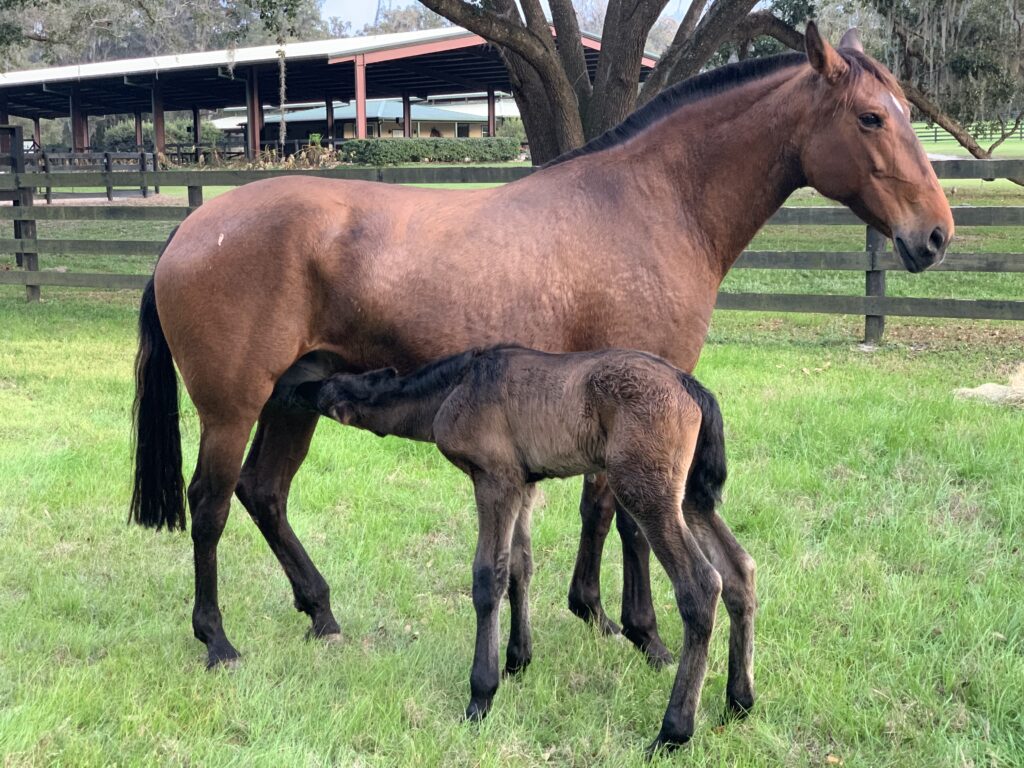
Crescente had gotten quite sweaty in the trailer, so after awhile, Sharon led her up to the barn for a quick rinse. Then mama and baby settled in to their stall for the night. Home sweet home.
